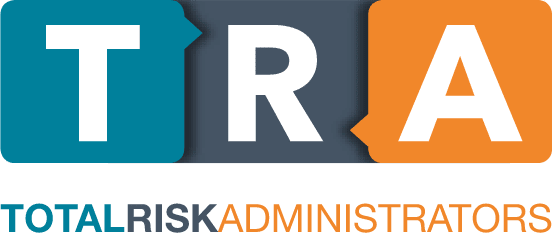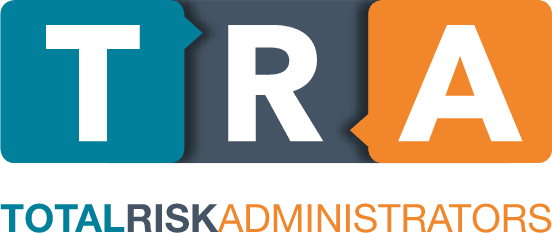Medical Insurance and Medical Aid may sound like the same thing, and in many ways, they can overlap; however, there are some key differences between a medical aid scheme and medical insurance that are important to know when making a decision on your coverage.
Both medical aid and medical insurance offer some form of financial support for healthcare. They differ in how they manage risk, cover costs, and provide benefits.
This article breaks down the major distinctions and differences, helping you make an informed decision that suits your personal healthcare needs.
What is a Medical Aid Scheme?
In South Africa, a medical aid scheme operates as a non-profit entity governed by the Medical Schemes Act. These schemes are designed to pool members’ contributions (put all the contributions together) to ensure that funds are available to cover essential healthcare services when needed.
Medical aid schemes must register with the Council for Medical Schemes (CMS) and adhere to strict regulations set out in the Medical Schemes Act. These include providing cover for a defined list of conditions known as Prescribed Minimum Benefits (PMBs). PMBs include 270 medical conditions and 25 chronic diseases, such as asthma, diabetes, and HIV.
Features (& Benefits) of Joining A Medical Aid Scheme
- Comprehensive coverage for in-hospital and day-to-day cover, depending on the plan.
- Guaranteed benefits for prescribed minimum benefit conditions.
- Members are subject to community rating, meaning everyone pays the same premium regardless of health status.
- Medical aid scheme cover contributions are typically higher than insurance premiums.
- Waiting periods and late-joiner penalties may apply.
Medical aid schemes typically offer structured plans that may include coverage for chronic medication, GP (general practitioner/doctor) visits, specialist consultations, hospitalisation and in-hospital benefits.
But Did You Know?
Even though medical aid schemes provide healthcare cover, there is often a gap (shortfall/difference) between what the medical scheme pays and what the specialists charge, which you will be liable for. Gap cover is often necessary to bridge the difference, ensuring you’re not paying out of pocket.
What Is Medical Insurance?
Medical insurance, which includes products like primary healthcare and gap cover, is now governed by the Insurance Act (2017). Although these products were historically classified under the Short-Term Insurance Act, the regulatory landscape has evolved. Today, insurers offering these products must be licensed by the Prudential Authority (PA) and are also subject to oversight by the Financial Sector Conduct Authority (FSCA) in terms of conduct standards. These regulatory frameworks ensure greater consumer protection, financial soundness, and standardisation of benefits.
It’s important to note that demarcated products – including gap cover – must comply with strict pricing rules that limit how premiums can be adjusted. For most of these products, age and health-based discrimination is not permitted, with only limited exceptions (e.g., family composition or plan structure). All premiums must be actuarially justified, risk-pooled, and in line with the requirements of the Insurance Act and its supporting regulations.
Features (& Benefits) of Signing Up For Medical Insurance
- Fixed payouts for specific events, not necessarily linked to the actual medical costs incurred.
- No obligation to cover prescribed minimum benefits.
- Health insurance premiums are generally lower than medical aid premiums.
- May cover events like accident cover, hospital stays, and critical illness diagnoses.
- Typically excludes day-to-day benefits like GP visits and routine check-ups.
Some medical insurance products may offer add-ons like basic dentistry or optical benefits, but these are usually limited and vary widely between providers.
Medical Aid vs Medical Insurance: Let’s See It In A Table
| Difference in: | Medical Aid Scheme | Medical Insurance |
| Governing Legislation | Medical Schemes Act | Insurance Act (2017) |
| Regulatory Body | Council for Medical Schemes (CMS) | Financial Sector Conduct Authority (FSCA) and the Prudential Authority |
| Type of Cover | Comprehensive, real-time payment of medical expenses | Fixed cash payouts per event |
| Covers PMBs | Yes | No |
| Premium Structure | Community-rated (everyone pays the same) | No difference in premiums due to age or health (with limited exceptions) |
| Plan Types | Medical aid options with tiered benefits | Policy-based options with specific payouts |
| Use of Funds | Contributions are pooled for all members | All premiums must be actuarially justified, risk-pooled, and in line with the requirements of the Insurance Act and its supporting regulations |
| Purpose | Provide real-time medical cover | Offer financial support after specific events |
This comparison highlights the distinction between medical aid and medical insurance in terms of how they support an individual’s access to healthcare.
Regulatory Note: All licensed insurers offering medical insurance or gap cover in South Africa are governed by the Insurance Act (2017), with oversight from the Prudential Authority and FSCA. These products must follow strict actuarial pricing rules, pooled funding principles, and conduct requirements, ensuring equitable treatment of policyholders and compliance with national legislation.
Which Option Is Best for You?
The choice between medical insurance vs medical aid depends on your personal situation.
- Medical aid is suitable for those with ongoing healthcare needs, chronic conditions, or families seeking comprehensive coverage.
- Medical insurance may be preferable for healthy individuals needing cost-effective insurance cover for emergencies or specific events.
But Did You Know?
Most private hospitals may not accept patients without upfront payment or a recognised medical aid, making medical aid suitable if you want to access private medical care with ease.
Terms You Should Know
Prescribed Minimum Benefits (PMBs)
A set of conditions that all medical schemes must cover, including treatment and diagnosis for chronic and emergency conditions.
Late-Joiner Penalty
A surcharge is applied if you join a scheme after the age of 35 without prior medical aid membership.
Waiting Period
A set time during which certain benefits are not accessible, especially for new members or those with specific medical conditions.
Co-Payment
An upfront, out-of-pocket amount that the member must pay before the medical aid covers the remaining cost of a procedure or treatment.
Pre-authorisation
Permission is required from your scheme before undergoing a planned specific medical procedure.
Medical Aid Schemes in Practice & Their Limitations
Members of medical aid schemes have access to a defined list of services, with payments made directly to healthcare providers or reimbursed to members who already paid providers in full, up to a specified rate known as the medical scheme rate (MSR). These may include:
- Hospital care
- Chronic disease management
- GP and specialist consultations
- Cover for specific medical procedures and medication
Funds are pooled to support all members who are a part of the scheme, allowing for access to private healthcare regardless of age or current health condition. This model ensures that essential medical needs are met without exposing members to the full actual cost of treatment. With that being said, although a portion of the medical costs are covered, they are covered as per the medical scheme rate. Should the specialist charge more than this rate, there will be a shortfall that will need to be covered by the individual.
The Role of Gap Cover
Gap cover exists to address these shortfalls and differences, especially for in-hospital coverage and co-payments.
It’s important to note that gap cover does not replace medical aid but complements it, ensuring you’re not left with unexpected medical expenses due to medical aid shortfalls.
Make an Informed Choice
Choosing between medical aid and medical insurance should be based on an honest evaluation of your budget, health status, and healthcare services needs.
If you want comprehensive coverage and protection from high medical costs, a medical aid scheme is often the better route to go. However, if you’re not able to fit it in the budget, you’re healthy and just want cover for major incidents, medical insurance may provide sufficient financial cover at a lower premium.
For many, combining medical aid with gap cover can offer the best overall coverage, ensuring timely treatment, while also protecting against high out-of-pocket expenses.
If you’d like to learn more about TRA’s gap cover or need help comparing medical aid options, check out our gap cover page.




